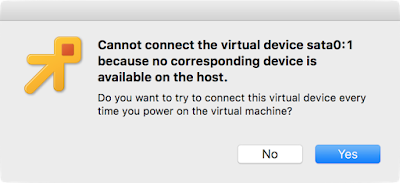SDxCentral Promotes Dan Meyer to Editor-in-Chief
 SDxCentral is pleased to announce Dan Meyer has been promoted to editor in chief at SDxCentral. Read more in this post by CEO Matt Palmer.
SDxCentral is pleased to announce Dan Meyer has been promoted to editor in chief at SDxCentral. Read more in this post by CEO Matt Palmer.
Enjoy a slice of QUIC, and Rust!

During last year’s Birthday Week we announced early support for QUIC, the next generation encrypted-by-default network transport protocol designed to secure and accelerate web traffic on the Internet.
We are not quite ready to make this feature available to every Cloudflare customer yet, but while you wait we thought you might enjoy a slice of quiche, our own open-source implementation of the QUIC protocol written in Rust.

Quiche will allow us to keep on top of changes to the QUIC protocol as the standardization process progresses and experiment with new features more easily. Let’s have a quick look at it together.
Simple and genuine ingredients
The main design principle that guided quiche’s initial development was exposing most of the QUIC complexity to applications through a minimal and intuitive API, but without making too many assumptions about the application itself, in order to allow us to reuse the same library in different contexts.
For example, while we think Rust is great, most of the stack that deals with HTTP requests on Cloudflare’s edge network is still written in good ol’ C, which means that our QUIC implementation would need to be integrated into that.
The quiche API can process Continue reading
Deutsche Telekom Flags Further 5G Tests in 2019
 The German carrier signed an agreement with the Berlin Senate Department for Economics, Energy and Public Enterprises to drive 5G deployment in the capital.
The German carrier signed an agreement with the Berlin Senate Department for Economics, Energy and Public Enterprises to drive 5G deployment in the capital.
Community Networks: In Tanzania, Helping to Close the Connectivity Gap

Community established networks, also referred to as “community networks” (CNs), have existed for many years and provide a sustainable solution to address the connectivity gaps that exist in urban, remote, and rural areas around the world. While the global statistics estimate that about half of the world population has access to the Internet, the connectivity gap is wide between the developed and developing countries.
In Tanzania, there are 41.8 million voice telephone subscriptions and only 23 million Internet users. A study by Research ICT Africa reported that when Internet access is compared between rural and urban areas, 86% of rural dwellers remain unconnected to the Internet compared to 44.6% in urban areas. Similarly, in Tanzania, fewer women have access to and use of the Internet than men.
In order to address the connectivity challenges in Tanzania, the Internet Society Tanzania Chapter in partnership with the University of Dodoma, supported by Beyond the Net Funding Programme, has built a pilot project using TV white space as a community network solution. The deployed network has connected four educational institutions in rural Tanzania and at the same time provided Internet access to community members around the schools.
In order Continue reading
A New Breed of IT Pro: The Hybrid Engineer
Today there is a need for a new breed of IT professional−the hybrid engineer. This is an engineer who understands DevOps and has the technical skills and ability to communicate in business terms.
Network Reliability Engineering on Software Gone Wild
In summer 2018 Juniper started talking about another forward-looking concept: Network Reliability Engineering. We wanted to find out whether that’s another unicorn driving DeLorean with flux capacitors or something more tangible, so we invited Matt Oswalt, the author of Network Reliability Engineer’s Manifesto to talk about it in Episode 97 of Software Gone Wild.
Read more ...Cannot connect the virtual device … because no corresponding device is available on the host
Recently I've been building some VM templates on my MacBook and launching instances of them in VMware. Each time it produced following error:Cannot connect the virtual device sata0:1 because no corresponding device is available on the host.
Either button caused the guest to boot up. The "No" button ensured that it booted without error on subsequent reboots, while choosing "Yes" allowed me to enjoy the error with each power-on of the guest.
Sata0 is, of course a (virtual) disk controller, and device 1 is an optical drive. I knew that much, but the exact meaning of the error wasn't clear to me, and googling didn't lead to a great explanation.
I wasn't expecting there to be a "corresponding device ... available on the host" because the host has neither a SATA controller nor an optical drive, and no such hardware should be required for my use case, so, what did the error mean?
It turns out that I was producing the template (a .ova file) with the optical drive "connected" (VMware term) to ... something. The issue isn't related to the lack of a device on the host, but that there's no ISO file "inserted" into the virtual drive.
Here's the Continue reading
AT&T Outlines 3 Pillars of Its 5G Strategy
 They are mobile 5G, fixed wireless, and edge computing, and AT&T says it is building its networks to allow “LTE to work efficiently in parallel with 5G.” “
They are mobile 5G, fixed wireless, and edge computing, and AT&T says it is building its networks to allow “LTE to work efficiently in parallel with 5G.” “
Accenture Upgrades Linux Foundation Membership, Expands ONAP Work
 Accenture has been working on a commercial version of ONAP to support providers’ transition from hardware-based to software-based networks.
Accenture has been working on a commercial version of ONAP to support providers’ transition from hardware-based to software-based networks.
Security VC Funding Hit Record $5.3 Billion in 2018
 But “this rate of investment is not sustainable,” Strategic Cyber Ventures warns. There are likely many security “zombies” that initially raised big rounds but now growth has slowed.
But “this rate of investment is not sustainable,” Strategic Cyber Ventures warns. There are likely many security “zombies” that initially raised big rounds but now growth has slowed.
When Metaphors Fail
We often use metaphors to describe a particular part of a thing or the thing itself. For instance, we might say “I’m as hungry as a horse,” to describe how much we think we could eat (although a more appropriate saying might be “as hungry as a bird,” as it turns out!). Network operators and engineers are no exception to this making of metaphors, of course.
Metaphors have a reductionistic tendency. For instance, when saying I am as hungry as a horse, I am relating the amount of food a horse might eat to the amount of food I feel like eating. The metaphor reduces the entire person and the entire horse so the turn on a single point—a quantity of food. In using this kind of comparison, I am not claiming to have the same number of legs as a horse, or perhaps a swishing tail like a horse.
The danger in using a metaphor is that you can take the part to be the whole. When this happens, the metaphor says things it should not say, and can cause us to misunderstand the scope, complexity, or solution to a problem. For some reason, we tend to do Continue reading
LDP Multipath/ECMP
In one of our last posts on MPLS – we showed how LDP can be used to dynamically exchange labels between MPLS enabled routers. This was a huge improvement from statically configured LSPs. We saw that LDP was tightly coupled to the underlying IGP but we didn’t spend a lot of time showing examples of that. In this post, I want to extend our lab a little bit to show you exactly how tightly this coupling is. To do so, we’ll use part of the extended lab that we created at the end of our last post on the JunOS routing table. For the sake of being thorough, we’ll provide the entire configuration of each device. The lab will look like what’s shown below…

For a base configuration – we’re going to start with mostly everything there with the exception of MPLS and LDP. We’ll then add that in stages so we can see how things look before and after we have multiple IGP paths to the same destination…
vMX1 Configuration…
system {
host-name vmx1.lab;
}
interfaces {
ge-0/0/0 {
unit 0 {
family inet {
address 10.2.2.0/31;
}
}
}
ge-0/0/1 {
unit 0 {
Continue reading
Cisco, Akamai Participate In EdgeMicro Live Testing
 According to EdgeMicro, these proof-of-concept edge computing tests are the last step before deployment.
According to EdgeMicro, these proof-of-concept edge computing tests are the last step before deployment.
Network Break 218: AWS Launches New Backup Service; Rubrik Rakes In VC Bucks
Today's Network Break analyzes a new AWS backup service, Rubrik's latest infusion of VC cash, whether the tech sector has reached its natural growth limit and what that means for how tech companies are valued, a Juniper/IBM deal, and more.
The post Network Break 218: AWS Launches New Backup Service; Rubrik Rakes In VC Bucks appeared first on Packet Pushers.
Tech Bytes: Understanding Cisco’s Smart Net Total Care (Sponsored)
On today's Tech Bytes, sponsored by Comstor, we're going to dive into Cisco's Smart Net Total Care. We discuss different service options and examine the Collector software that can help organizations get a handle on Cisco software licenses, updates, and bug fixes.
The post Tech Bytes: Understanding Cisco’s Smart Net Total Care (Sponsored) appeared first on Packet Pushers.
Dell’Oro: 5G NR to Boost RAN Investments to $160B in Five Years
 Research group sees reasons to be cheerful as mobile infrastructure market set to see turnaround after three consecutive years of declining revenues thanks to 5G New Radio.
Research group sees reasons to be cheerful as mobile infrastructure market set to see turnaround after three consecutive years of declining revenues thanks to 5G New Radio.
The Week in Internet News: IoT Hacked? Who Knows?

IoT survey: Nearly half of all companies using IoT devices don’t have mechanisms in place to detect if any of their devices have been hacked, according to a survey featured in a Fast Company story. Just 14 percent of the respondents to the Gemalto survey believe providing security is an ethical consideration.
Huge leak: More than 22 million unique passwords and 772 million email addresses were leaked and distributed by hackers in a folder named “Collection #1,” Mashable reports. The cache of emails and passwords were collected from several data, dating back to 2008.
Pushing back: WhatsApp is planning to fight India’s recent crackdown on encryption, FT.com reports. Indian policymakers have proposed rules that would allow authorities to trace the origin of encrypted messages, but WhatsApp says it will protest the proposals.
Fighting fake news: Japan’s government plans to come up with a plan to fight fake news by June, Japan Times says. The plan could include requiring social media companies to create codes of conduct. Several other attempts by governments to fight fake news have led to concerns about censorship, however.
AI as a weapon: Forbes.com has a story raising concerns about the weaponization of Artificial Intelligence. Continue reading
